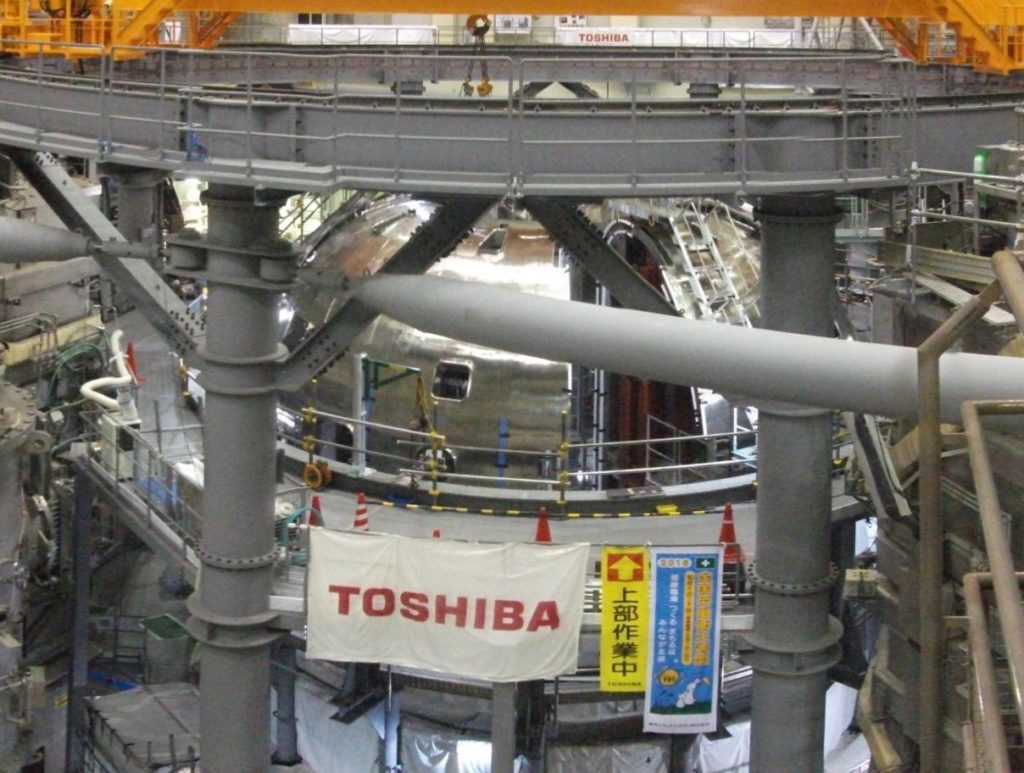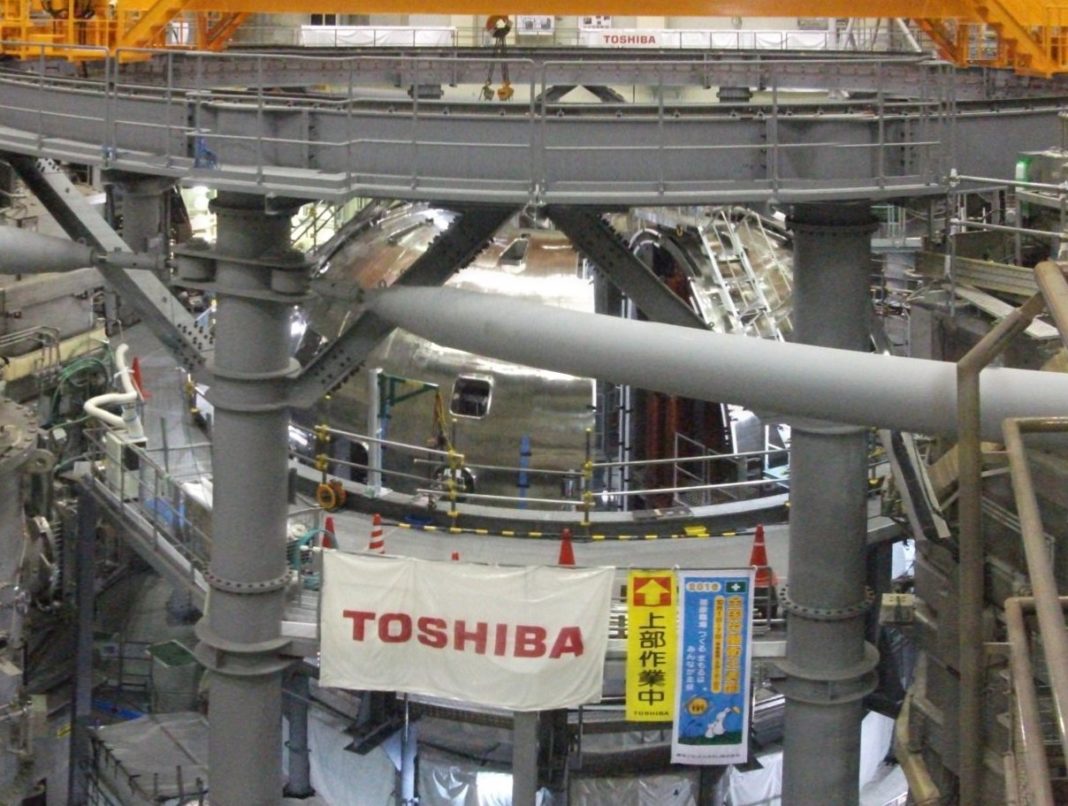JT-60 (short for Japan Torus-60) is a large research tokamak, the flagship of Japan’s magnetic fusion program, previously run by the Japan Atomic Energy Research Institute (JAERI) and later by the Japan Atomic Energy Agency’s (JAEA) Naka Fusion Institute in Naka, Ibaraki Prefecture.

As of 2023 the device is known as JT-60SA and it is the largest operational superconducting tokamak in the world to date, and was built and is operated jointly by Europe and Japan. SA stands for super advanced tokamak, including a D-shaped plasma cross-section, superconducting coils, and active feedback control.
The JT-60SA is a doughnut-shaped (toroidal) device known as a tokamak. It operates with hydrogen, with the gas being heated to 200 million degrees Celsius to become plasma and then confined for about 100 seconds using the powerful magnet system formed by 28 superconducting coils.
The JT-60SA program was started in June 2007. Construction of the tokamak officially began in 2013, and it was to continue until 2020 with first plasma planned in September 2020. Assembly was completed in the spring of 2020, and in March 2021 it reached its full design toroidal field successfully, with a current of 25.7kA. A test of the poloidal field coils in March 2021 suffered a short circuit leading to a lengthy investigation and repair. Repairs were completed in May 2023 and preparations for operation began. First plasma was achieved on 23 October 2023 making JT-60SA the largest operational superconducting tokamak in the world to date.
According to the Internet















